Last Updated on September 27, 2022 by TheMealPrepNinja
What is a weekly meal plan?
Do you want to learn how to make a weekly meal plan? One of the best ways to save both time and money is to create a weekly meal plan. This can be as simple as deciding what you’re going to have for dinner each night or can include more complex planning, like creating a grocery list based on the week’s meal plan. Here are a few tips to get you started on meal planning:
1. Decide what you want to eat. This may seem like a no-brainer, but it can be helpful to have a general idea of what you’d like to eat each night rather than trying to come up with something on the fly each evening. Pinterest and other food websites can be great resources for inspiration. I have plenty of meal prep recipes on this site so you don’t have to go far.
2. Create a list based on your meal plan. Avoid last-minute trips to the store by creating a list that corresponds with your planned meals. This will also help you stay within your budget.
3. Stick to your plan! One of the benefits of creating your own meal plan is that it helps reduce stress and allows you more time for other things. By sticking to your plan, you’ll avoid the temptation to order takeout or eat out at restaurants. Your own meal plans are a great way to stay on track and have less food waste.
Here is another article I wrote about Meal Planning for Beginners: 10 Steps for Success.
Create your weekly meal planning grid and fill out the days of the week
Creating a Weekly Meal Planner Grid:
1. On the top of the grid, list the days of the week.
2. Down the side of the grid, list out all of the meals you would like to have during the week.
3. In each box on the grid, write what day that meal will be eaten.
4. Repeat steps 2 and 3 for each meal you would like to have during the week.
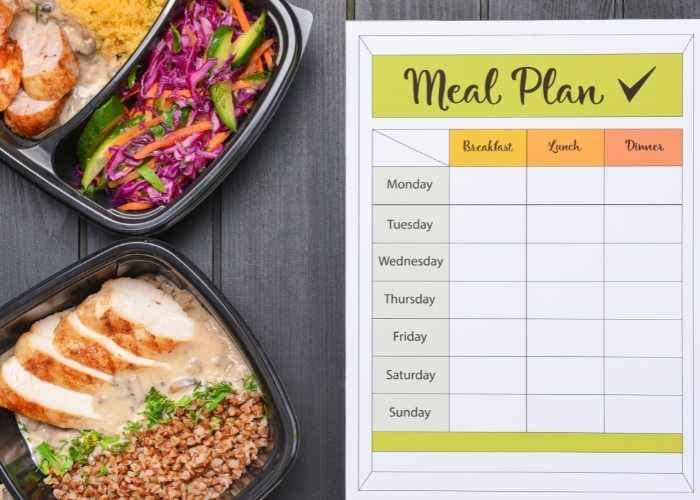
Use a 2-Step Process for a Smarter Grocery List
When you are creating your list, use a two-step process to make sure that you are getting the most for your money.
The first step is to come up with meal ideas you want to make during the week. This will help you to stay organized and make sure that you are using all of the ingredients that you have.
The second step is to create a list that follows your meal plan. This way, you won’t be wasting any money on groceries that you don’t need.
By following these two steps, you can create a smarter list that will help you save money and time in the kitchen. Meal planning is the way to go.
Meal planning 101 – How to make a meal plan that works for YOU
One of the best ways to make sure you have a healthy balance of home-cooked meals is to create a weekly meal plan. This way, you can grocery shop and cook with a plan, and not have to worry about what you’re going to make for dinner each night. Not only does this save you time and money, but it can also help you eat healthier.
There are a few different ways to go about creating a meal plan. You can choose recipes ahead of time, make a list of your favorite meals, or come up with a menu based on what’s on sale at the grocery store. Whichever method you choose, make sure it’s something that will work for you and your family.
If you’re struggling to come up with ideas for what to cook, there are plenty of websites and apps that offer healthy recipes. Pinterest is a great resource for finding recipes, as well as meal planning templates that can help get you started.
Once you’ve chosen your recipes, it’s important to map out the week ahead so you know what ingredients you need and when they need to be cooked. This will help prevent any last-minute rushes to the grocery store or eating out because you didn’t have anything planned.
If cooking every day feels like too much work, consider cooking double or even triple batches of certain meals and freezing them for later in the week. This can be especially helpful on nights when you don’t feel like cooking or don’t have time.
Meal planning doesn’t have to be hard – with a little bit of organization and planning, it can be an easy way to ensure that you always have something healthy (and delicious) to eat at home.

Next, choose your recipes very carefully
Next, choose your recipes very carefully. You don’t want to be cooking the same things every week, so mix it up with some new dishes and old favorites. Make a list of the ingredients you’ll need for all of your recipes, and then get shopping! When you get home, prep your food according to the instructions and you’re good to go.
Decide how many meals to plan and what they need to do
Now that you know how many meals to plan, it’s important to think about what they need to do. Most people like to have a variety of meals throughout the week, so try to mix it up. You’ll also want to make sure that your meals are balanced and provide all the nutrients your body needs. This can be done by including different food groups in each meal.
Finally, make sure to include plenty of fruits and vegetables in your diet; they’re not only healthy, but they’re also low in calories.
Shop from your list and then post it in the kitchen to follow each day
Now that you have your list, it’s time to go shopping! Make sure to shop from your list and only buy what is on it. This will help you stay on track and save money. Once you’re back home, post your list in the kitchen so you can follow it each day. This will make preparing your meals a breeze!
You might benefit from a Meal Planning Journal.

How can I create a customized meal plan that works for you?
Creating a customized meal plan can be a daunting task. There are so many choices and factors to consider, like dietary restrictions, preferred foods, and cooking styles. But don’t worry, we’re here to help!
1. Start by thinking about your preferences and needs. What kinds of foods do you enjoy? What are your favorite meals? Do you have any dietary restrictions or allergies?
2. Next, take a look at what’s already in your pantry and fridge. Maybe there are some ingredients you can use for multiple meals. This will help you save time and money for batch cooking.
3. Now it’s time to start brainstorming recipes! There are tons of recipes online, or you can find cookbooks at your local library or bookstore. Choose recipes that fit your preferences, ingredients you have on hand, and cooking style.
4. Once you have chosen your recipes, create a list based on the ingredients needed for each dish. This will help you stay organized and avoid buying duplicates of items.
5. Finally, it’s time to cook! Follow the recipe instructions carefully and enjoy your delicious home-cooked meals!
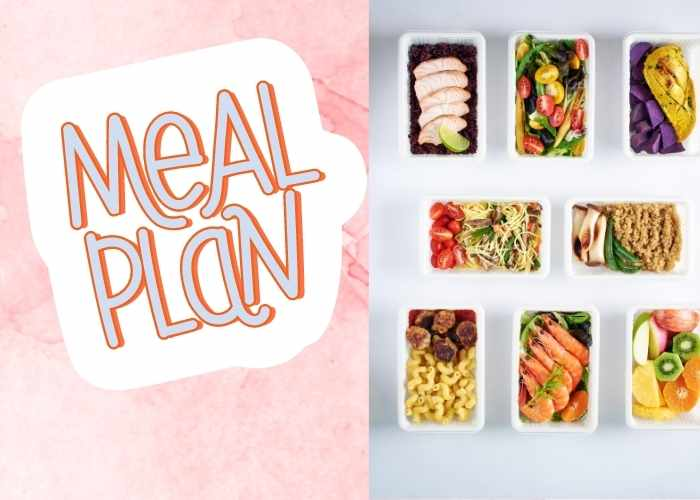
Write down any other household items needed
This may vary depending on what you need for your meal plan, but some common items you may need include:
Splices

Pantry items
Snacks
Prepare meals for the week… and don’t forget snacks!
Don’t forget to make snacks, too – you’ll want something to tide you over between meals. By following this simple guide, you’ll be able to have a healthy and delicious week of meals without having to worry about what’s for dinner.
Tips for streamlining your meal plan
When creating your meal plan, there are a few tips that can help streamline the process:
1. Choose recipes that use common ingredients. This will help minimize the number of groceries you need to buy, and it will make cooking easier since you’ll have fewer ingredients to work with.
2. Plan ahead. Look at what you already have in your pantry and fridge, and then choose recipes that use those ingredients. This will help reduce food waste and save you money.
3. Make a list based on your meal plan. This will help you stay organized and avoid buying unnecessary items.
4. Stick to your list when shopping so that you avoid impulse purchases. This will help keep your grocery costs down.
5. Prep as much as possible ahead of time. This will save you time during the week when you’re busy. For example, you can wash and chop vegetables on the weekend, or cook ground beef in bulk and then use it in different recipes throughout the week.
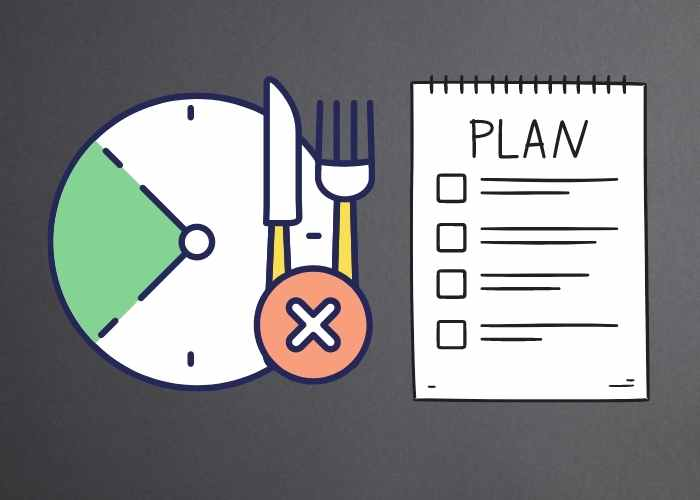
Spend an Hour on Sunday Preparing
Spend an hour on Sunday preparing. This will include making a grocery list, grocery shopping, and then prepping your food for the week.
The first thing you’ll want to do is make a grocery list of the ingredients you’ll need for the week’s meals. Once you have your list, head to the store and stock up.
When you get home, start prepping your food. This could include chopping vegetables, cooking meat, or baking dishes. By doing this ahead of time, you’ll save yourself time during the week when you’re busy. Keep a master list for weeks to follow.
Watch video’s on How to Create a Meal Plan
If you’re like most people, you probably don’t have a lot of time to cook every day. That’s why creating a weekly meal plan is a great way to make sure you have something to eat, without spending all day in the kitchen. My YouTube has plenty of recipes that you can follow for breakfast, lunch, and dinner.
The Meal Prep Ninja YouTube Channel.
Make sure to check out my channel so that you get inspiration on recipes to make. You can try a different recipe every week.
10 steps for meal planning success
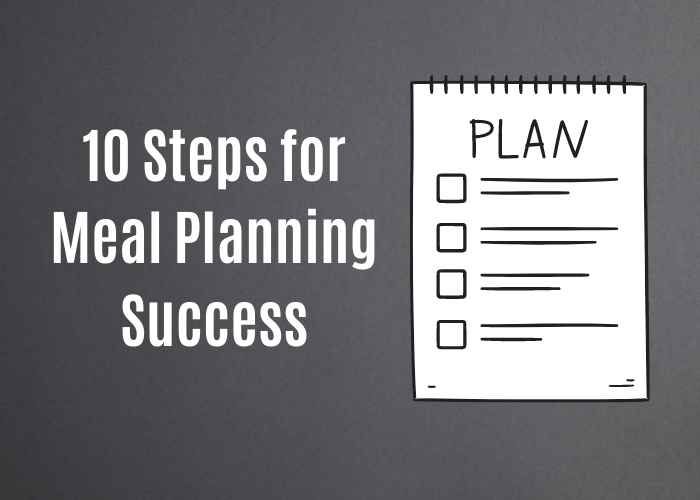
1. Plan your meals for the week. This may involve looking through cookbooks or online recipes, or simply deciding what you would like to eat for each meal.
2. Make a grocery list based on the meals you have planned. Be sure to include all ingredients, as well as any necessary kitchen supplies.
3. Shop for the ingredients you need.
4. Once you get home, prep your ingredients according to the recipes you are using. This may involve chopping vegetables, cooking meat, or simply putting everything in storage containers so it is ready to go when you are.
5. During the week, when it is time to cook dinner, simply select one of your prepared meals and follow the instructions.
6. If you do not feel like cooking a particular night, go ahead and choose a different meal from your plan instead. There is no need to stress out about having to cook every single night!
7. Enjoy your home-cooked meals throughout the week!
8. If you find that you have leftover ingredients at the end of the week, be sure to use them up in another meal or store them in the fridge/freezer for later use.
9. Take advantage of leftovers by packing them up for lunch the next day. This can help save time and money during the workweek.
10. Keep track of what meals you cooked during the week and how they turned out. This will help you modify your meal plan as needed and make future plans easier to follow
FAQ’s
How do I make my own weekly meal plan?
The first thing you need to do is figure out what meals you want to eat for the week. You can get ideas from recipes online, in cookbooks, or even from friends and family. Once you have an idea of the types of meals you want, start brainstorming ingredients. This will help you figure out what you need to buy at the grocery store.
What are the 6 steps to planning weekly meals?
1. Scope out your schedule for the week and make a list of potential meals that will fit.
2. Choose recipes for your meals and make a grocery list of the ingredients you’ll need.
3. Meal prep on Sunday! This could include prepping any ingredients you need, cooking any dishes that can be made ahead of time, and packing any leftovers for lunch or future dinners.
4. Follow your meal plan throughout the week!
5. Get creative with leftovers and adapt recipes as needed.
6. Enjoy your delicious and nutritious home-cooked meals!
What is good meal prep for the week?
1. Breakfast:
-Omelet with spinach, tomatoes, and cheese
-Pancakes with blueberries
-Bagel with peanut butter and bananas
2. Lunch:
-Salad with grilled chicken, cucumbers, tomatoes, and berry vinaigrette
-Turkey sandwich with avocado, cheese, and lettuce
-Roasted vegetables and quinoa bowl
3. Dinner:
-Chicken enchiladas with black beans and corn
-Polenta pizza with sausage and roasted vegetables
-Pasta carbonara
Desserts
You can also prepare your own healthy desserts. I have several dessert recipes that you can try out on my blog and YouTube channel. Deserts are some of my favorite recipes to make.
Conclusion
Creating a weekly meal plan doesn’t have to be hard. Just sit down and think about what you and your family would like to eat during the week. Once you have a list of meals, you can then create a grocery list based on the ingredients that you will need for each dish.
Planning ahead will help ensure that you have everything you need when it comes time to cook, and it will also help keep your costs down. So, why not give meal planning a try? You may find that it’s a habit that you really enjoy!
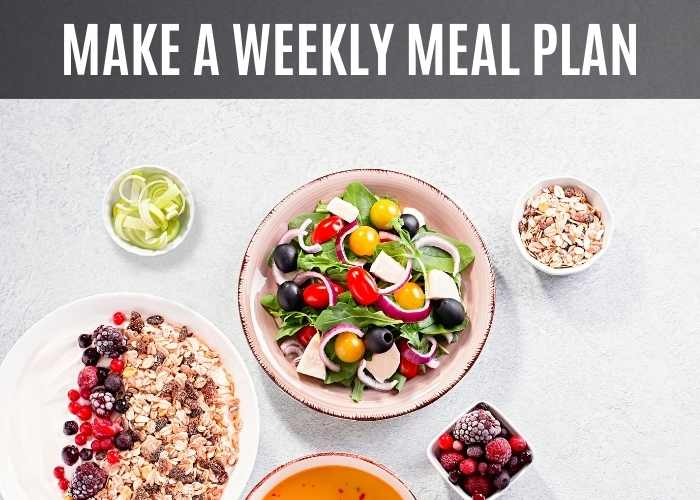
Jim Lopez, the founder and editor of The Meal Prep Ninja, shares his journey from a passionate bodybuilder and fitness enthusiast to a certified nutrition coach. Certified by Precision Nutrition, Jim aims to empower others with knowledge on meal prep and nutrition, offering resources for busy individuals to enjoy low-calorie, tasty foods. His blog is a community for sharing healthy eating habits and meal prep recipes



